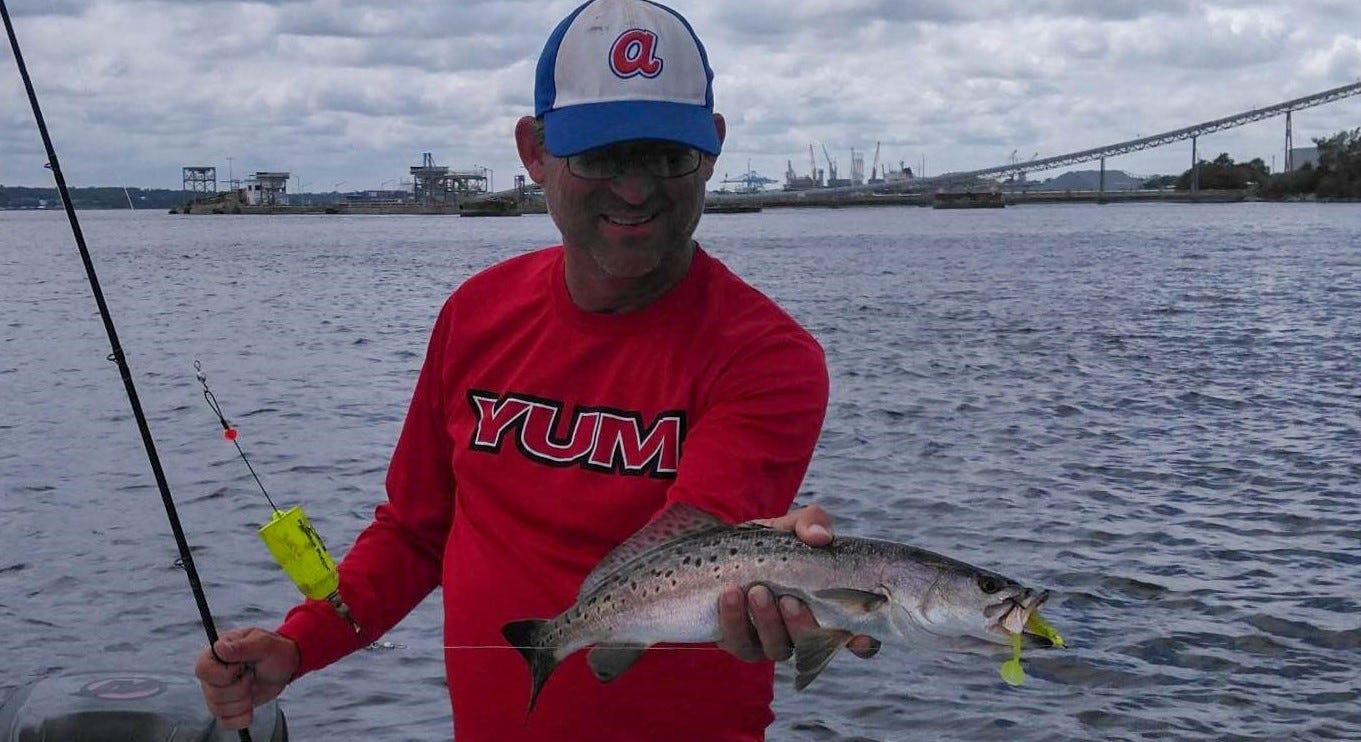- Jul 19, 2022
How to Fish for Redfish & Spotted Seatrout with Popping Corks
Popping corks serve several important functions for inshore fishing and can be used with artificial lures or natural bait. Learn to get the most out of these highly useful tools.
Few occurrences capture fishing fun quite like a float darting out of sight when a fish grabs a bait. The same thing is true whether you’re talking about a balsa pencil float disappearing when bluegill grabs a cricket or when a large saltwater popping cork gets yanked under by a redfish plowing a soft-plastic minnow.
In that sense, a popping cork, like a Bomber Paradise Popper X-Treme, is really just a big bobber. Used properly, though, a popping cork does far more than let you know when redfish or speckled trout takes your bait. It helps deliver offerings to the best areas, suspends them in the strike zone, calls fish from afar and urges the gamefish into feeding mode.
We’ll examine the situations that lend themselves well to using a popping cork and then dig into how and how to rig popping corks and fish them effectively.
Why a Popping Cork?
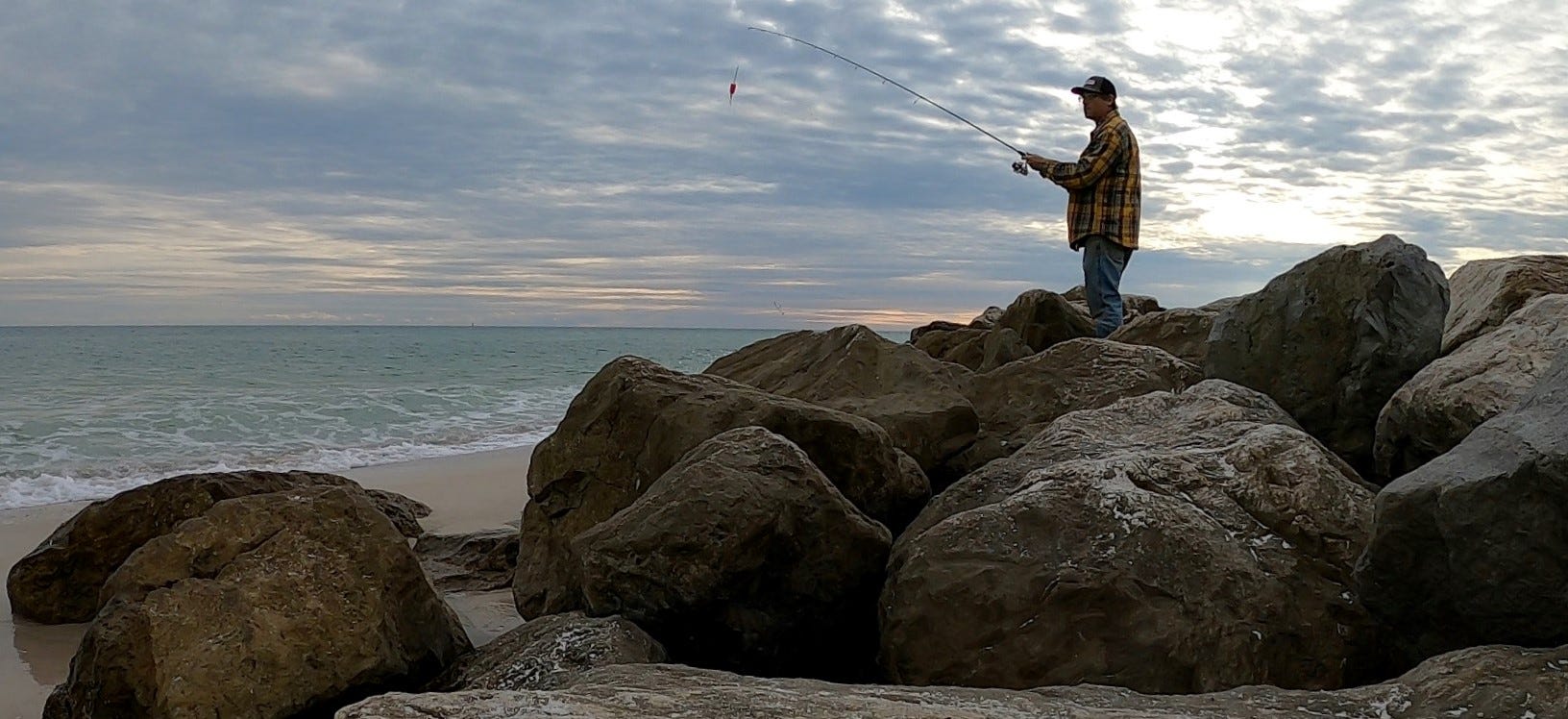

A popping cork offers tremendous virtue for presenting either live bait or soft plastic lures that imitate various kinds of sportfish forage. It draws fish from afar, in the same way a topwater lure does, but often appeals to fish that aren’t quite aggressive enough to feed on the surface.
Capt. Patric Garmeson of Ugly Fishing Inshore Charter Fishing on Mobile Bay really likes to use popping corks for finding feeding fish. If he has two or three customers aboard and they all cast to different spots, about 10 pops each will reveal whether the are redfish or speckled trout in the area. If not, they’ll keep moving. The cork makes a big sound, pulling fish from a much broader area than the path the rig travels, making it extra good for fish finding.
Popping corks also provide casting weight, making it far easier to effectively present sometimes-small imitations of shrimp, crabs and minnows. Long casts allow you to reach more fish to and get the rig well away from the boat.
As importantly, a popping cork allows you to present a bait slowly at a measured depth and keep it in the strike zone. If you’re fishing for redfish along a marsh grass edge, that measured depth might be less than 2 feet. For trout feeding over the edge of a sandbar, it might be twice that depth. Either way, you can put your bait at a prescribed depth and work it in that depth.
Finally, a popping cork lets you know what’s going on beneath the surface. With redfish, the message tends to be clear. The cork shoots under or starts moving sideways with serious resolve. Spotted seatrout aren’t always quite as decisive, but they also aren’t nibblers, so you typically know it when a fish bites!
How to Rig a Popping Cork
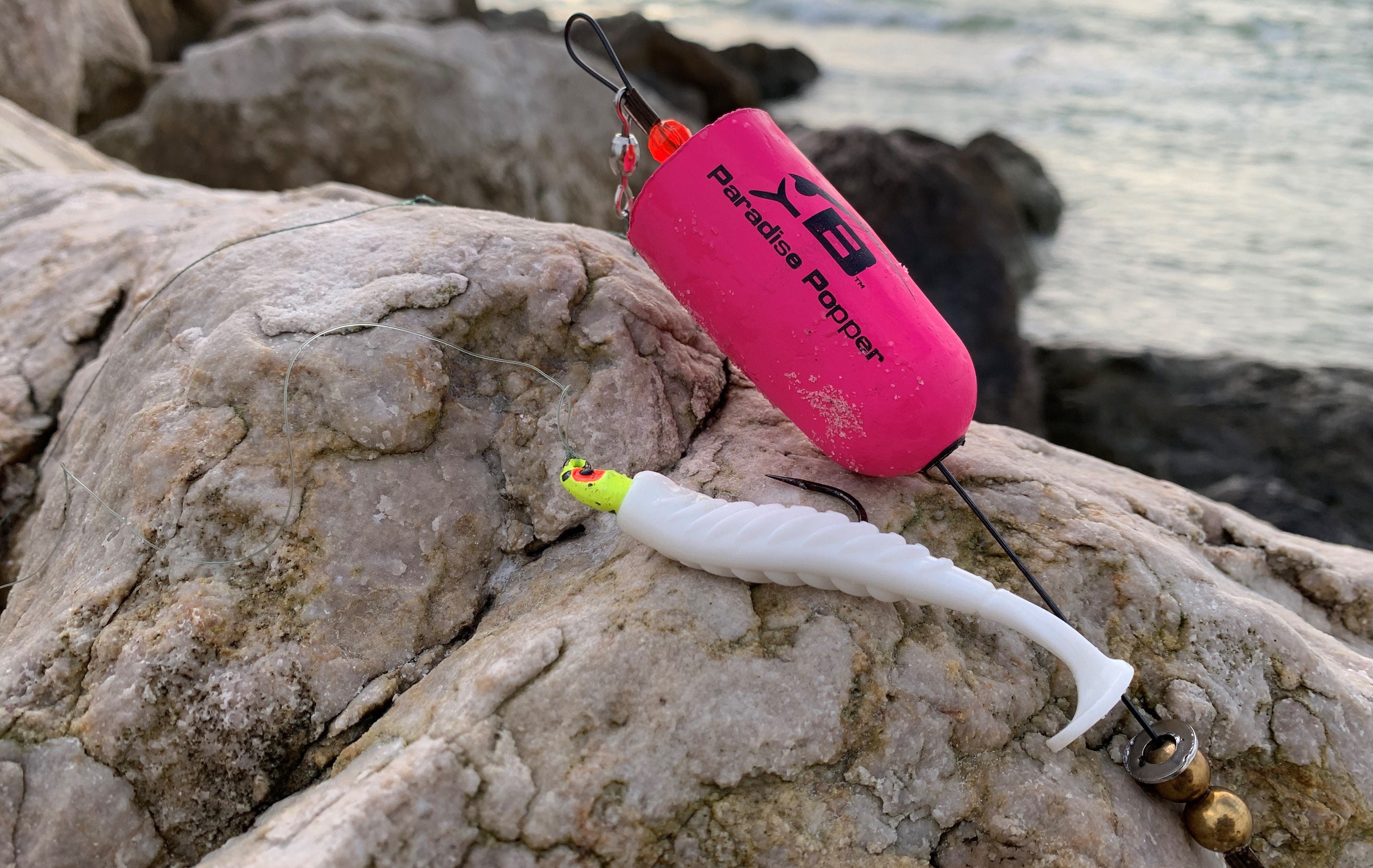

Basic rigging of a popping cork is simple. Tie your main line to the swivel at the top, a piece of leader to swivel at the bottom and your hook or jig to the terminal end of the leader. For live bait on a hook, you might also need to add a couple of large split shot to the leader to keep the bait down in the water column.
Spoons, saltwater flies and assorted other lures can be presented beneath a popping cork, but most anglers use either bait or a jig – mostly commonly a jighead with a soft-plastic shrimp, crab or minnow imitation. Popular live bait choices for popping cork fishing include shrimp, menhaden, mudminnows and fiddler crabs.
Garmeson likes a 7- to 7 ½-foot medium-heavy spinning rod with a fast tip. He spools his reel with braided line because the lack of stretch makes it substantially easier to pop the cork effectively and to get good hooksets. The leader connecting the cork and lure or hook can be monofilament or fluorocarbon, but fluorocarbon provides an extra measure of toughness, which can be valuable around oysters, barnacles and various other sharp edges that are part of the inshore saltwater landscape.
How to Fish a Popping Cork
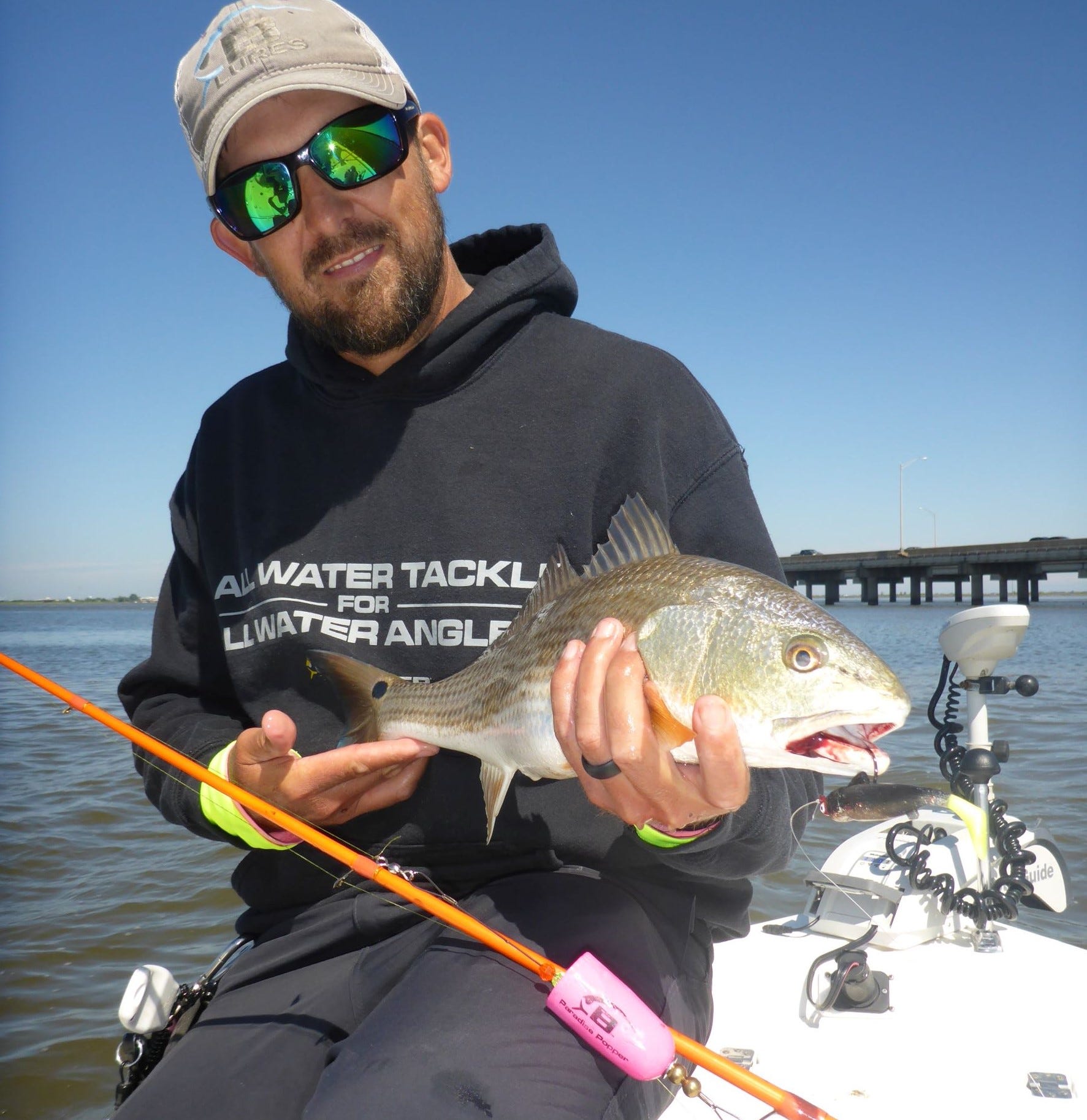

Fishing a popping cork rig is as simple as rigging, which is one of the great virtues of this presentation. Even the least experienced anglers can make highly effective presentations and will know without question when a fish bites.
First, cast to where fish are apt to be, whether that’s near cover, close to a “slick” or simply over a flat that trout or redfish use. After the rig lands, let it rest for a few seconds and watch your cork. Sometimes fish hit before you ever pop the cork.
If nothing hits immediately, work the cork with snaps of your rod tip that engage the rattles on the wire and, in the case of a popper shaped cork, create a splash. Each time you snap the rod tip, the popper makes a sound and the offering rises in the water column and pendulums back down. Often fish will hit just after a pop, prompted to strike by the bait’s falling motion.
Garmeson likes to pop a cork firmly to make big splash and always tells customers that whoever pops the cork the loudest will probably catch the most fish and the biggest fish. Whether it is calm or choppy, he wants to make a big splash to attract fish and suggest a fish feeding.
Garmeson also advocates long casts, both for the sake of keeping the bait working longer with each cast and to get the rig well away from the boat. Long casts also allow you to reach more fish when you see them breaking or see other signs of feeding activity.
Tips for Popping Cork Success
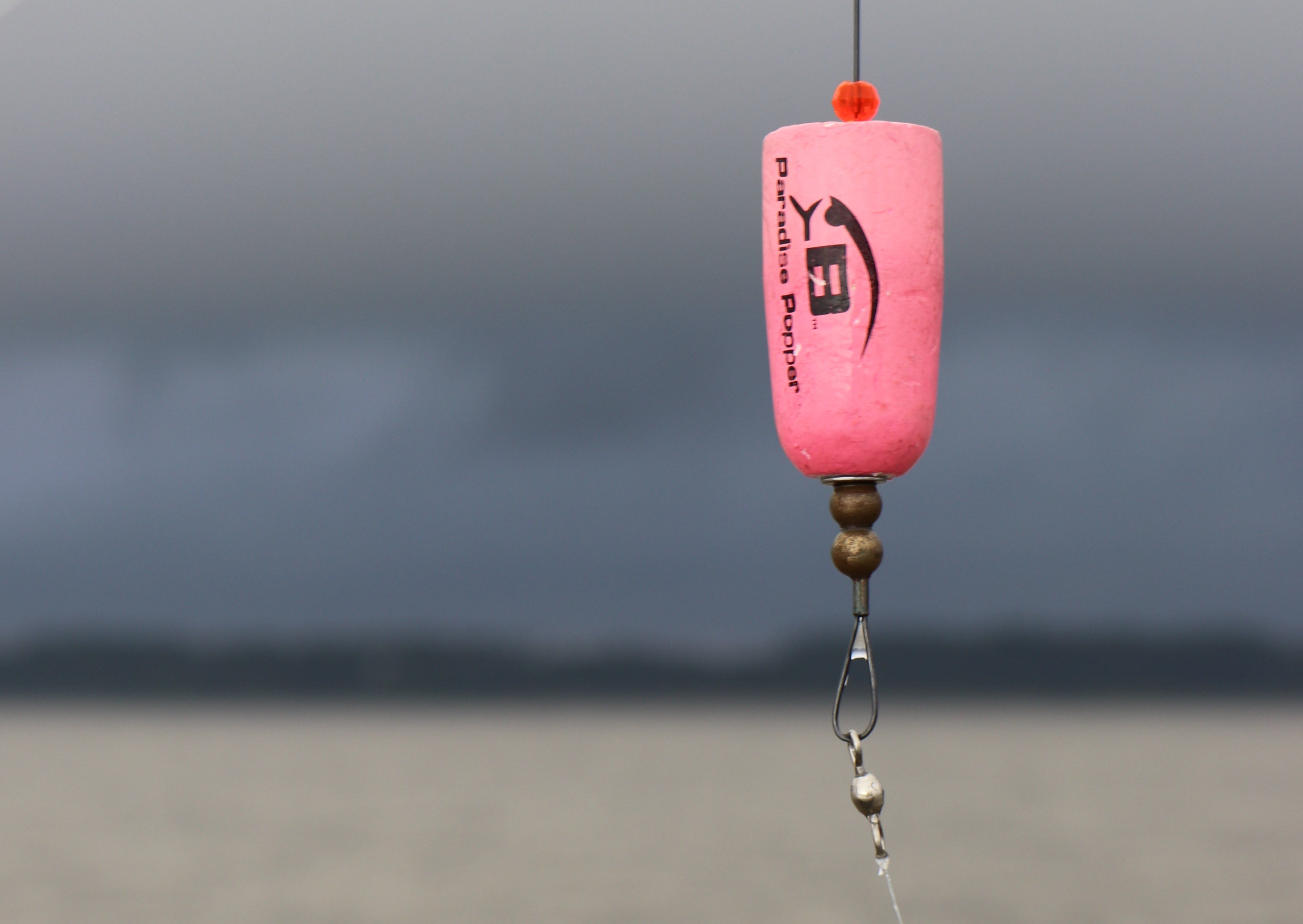

- Make LONG casts.
- Pick the cork color that you can see the best with current conditions.
- Match local forage with bait or artificial lures.
- Don’t overlook the importance of pauses between pops
- Vary cadences and the sharpness of rod sweeps to create different sounds.
- Watch continually for signs of feeding fish and aim your casts accordingly.
Oval vs. Popping Style
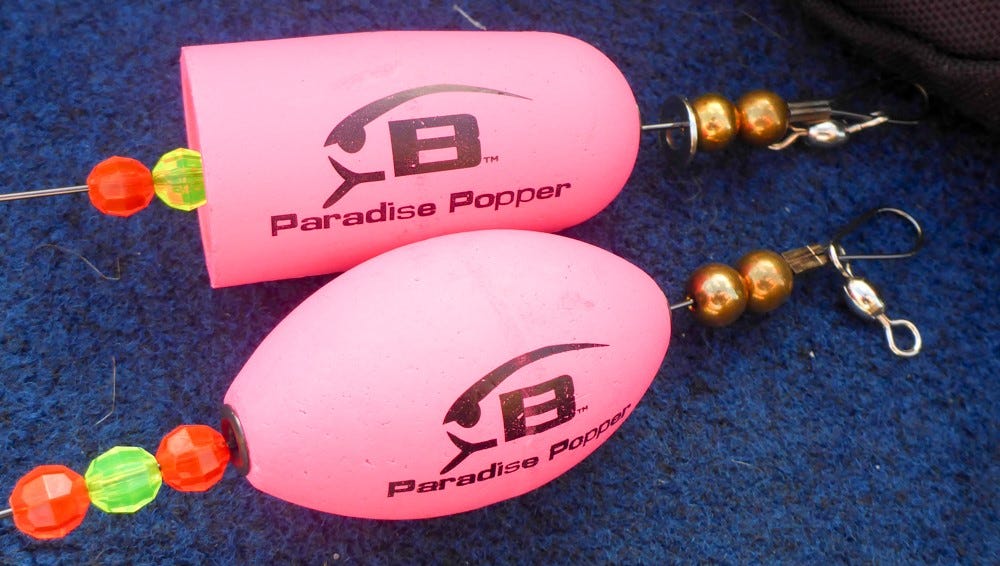

The Bomber Paradise Popper X-Treme comes in two shapes: oval and a traditional popper style. Size and weight are the same, and either shape features the same basic design, tough construction, titanium wire and combination of plastic and brass beads. Both shapes come in orange, pink and yellow.
Each shape has advantages. Many anglers prefer one shape over the other and fish it exclusively. Some treat them more as different tools for different situations. The primary difference is the sound each style makes.
Popper style Paradise Poppers are louder and call fish with the sound of the popping face and the clacking beads. A pop or chug makes a distinctive splash and sound and most likely suggests another feeding fish. Poppers excel when there is a bit of chop or stain and can call fish from farther away.
Ovals deliver a bit more subtlety and shine where the water is clearer and calmer. Because the don’t make noisy splash when snapped, the clacking of the beads is highlighted and becomes the primary “fish call.” Oval popping corks are also a bit more aerodynamic, allowing for easier casting in the wind.
6 Great Lures to Fish Beneath a Popping Cork
